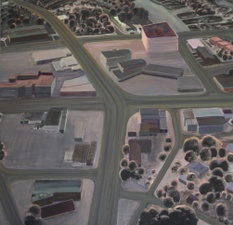Dinosaurier! Zeitalter der Riesenechsen
In the organizer's words:
Special exhibition from 23.08.2022 to 30.11.2023
In the new special exhibition "Dinosaurs!" you can discover dinosaurs from the three geological eras Triassic, Jurassic and Cretaceous for the first time.
Dinosaurs were an incredibly successful group of animals. They populated our planet for more than 150 million years. Their reign spanned three Earth ages: Triassic, Jurassic and Cretaceous. They survived one of the five great mass extinctions and adapted to changing environmental conditions. The end of their reign came suddenly and occurred 66 million years ago.
What does this story have to do with us? Find out and be amazed by spectacular fossils from three ages of the dinosaur era.
Star of the exhibition: Tristan Otto
In December 2015, Tristan Otto became the first original Tyrannosaurus rex skeleton to arrive in Europe and at the Museum für Naturkunde in Berlin. Tristan Otto is thus one of the few original T. re x skeletons outside North America. Between June 2020 and December 2021, the T. rex was on display at the Natural History Museum in Copenhagen and is now back.
The twelve-meter-long and four-meter-high skeleton of the Upper Cretaceous predatory dinosaur is 66 million years old. Its midnight-black coloration is characteristic of fossils from the so-called Hell Creek Formation. This is a fossil-rich rock layer in the US state of Montana, where the T. rex was found in 2010. Like Tristan Otto, all previous T. re x finds have come from North America. The recovery and preservation of the bones took a total of four years. Not least because of the almost completely preserved skull, Tristan Otto is one of the best preserved Tyrannosaurus rex specimens worldwide. Tristan Otto is named after the sons of the two owners.
Eye to eye with predatory dinosaurs
The exhibition opens with three spectacular predatory dinosaur skulls on display in the original. Surrounded by sharp teeth, visitors can view the impressive skulls of T. rex Tristan Otto and Allosaurus up close. The skull of a T. re x juvenile is also part of the presentation. Casper, as the fossil was christened by its owner, was only around seven years old. Thus Casper represents a speciality, because young T. re x were found only rarely so far.
With Allosaurus and T. rex two apex predators meet here, which would never have met in their lifetime. For Allosaurus made the forests unsafe in the Jurassic period, while T. rex lived only about 80 million years later in the Cretaceous period. What we know today about the carnivores' predatory and social behavior can be explored here eye to eye with the predatory dinosaurs.
A walk through the history of the earth
Different types of dinosaurs lived in the three geological eras. Visitors can move along the geological eras in the special exhibition. Beginning with the oldest Earth Age, the Triassic, visitors travel to the Jurassic period and end in the Cretaceous period 66 million years ago. Along the way, they encounter dinos from all the Earth's ages. Visitors are greeted by Plateosaurus, a Triassic herbivore that is not only the oldest dinosaur in the exhibition in terms of geological history, but is also one of the earliest dinosaur finds ever made, having been discovered in 1834.
In the following Jurassic age the dinosaurs have their heyday. Jurassic has become known among other things by the film "Jurassic Park". The skeleton of the small Nanosaurus, which in contrast to its predatory contemporaries the allosaurs, fed on plants, also dates from this time. At the end of the journey through prehistoric times, visitors are met by the T. rex Tristan Otto . He was one of the last living dinosaur species.
Or was it?
Most of the pieces in the special exhibition "Dinosaurs!" are on loan from private owners. Find out more about privately owned fossils here.
This content has been machine translated.












